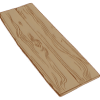How to Maintain Your Deck: Simple Checklists for Wood, PVC, and Composite Decks
We’ve all seen them: houses with dilapidated decks that are faded, falling apart, and sprouting mildew. Maybe in the past, that was your deck. Between the safety concerns, the decreased property value, and the sheer embarrassment, it’s not an experience you want to repeat.
If you own a house with a deck or are planning to build one soon, how can you make sure that your deck stays in good condition?
The trick is to perform small, regular maintenance tasks that prevent minor issues from accumulating and becoming significant problems over time.
Here at Keystone Custom Decks, we specialize in building custom decks in central Tennessee. We know that deck maintenance is crucial to its beauty, functionality, and longevity. That’s why today, we’re providing you with an easy checklist for keeping your deck pristine and functional for years.
Let’s get started!
Why Regular Deck Maintenance is Crucial
Your deck is an extension of your living space—whether it’s a place to host summer barbecues, sip coffee in the mornings, or simply enjoy the outdoors. But like any part of your home, it needs regular upkeep. Here’s why staying on top of deck maintenance matters:
- Aesthetics
A clean, well-maintained deck boosts your home’s curb appeal and creates an inviting atmosphere. Dirt, mildew, and sun exposure can leave your deck looking dull, stained, or weather-worn. Routine cleaning and resealing keep the wood or composite vibrant and beautiful, so your outdoor space always looks its best.

- Health and Safety
Loose boards, protruding nails, mold growth, and rot aren't just ugly—they’re dangerous. Regular inspections and maintenance help you catch and fix these issues early, reducing the risk of splinters, slips, or even structural failure. Keeping your deck safe is essential, especially if you have kids, elderly family members, or frequent guests.
- Home Value
A neglected deck can drag down your home's overall value, while a well-kept deck adds to its appeal. If you’re thinking of selling, buyers will take note of your outdoor living spaces. Investing in maintenance now can lead to better offers in the future.
- Overall Labor
It may seem counterintuitive, but regular maintenance saves time and effort in the long run. Small, consistent tasks like cleaning and sealing are much easier (and cheaper) than major repairs or full replacements caused by long-term neglect. A little effort now prevents a lot of hassle down the road.

Although many maintenance tasks are the same no matter what type of decking you choose, some types of decking require special considerations. For that reason, we’ll give slightly different maintenance checklists depending on the type of decking you own.
Maintenance Checklist for Pressure-Treated Wood Decks
The most common decking material is pressure-treated wood, which is relatively inexpensive and versatile. Pressure-treated wood is lumber that’s been infused with chemical preservatives to help protect it from rot, decay, and insect damage.
Maintenance is crucial for pressure-treated wood because if it’s not stained or sealed regularly, or if debris builds up and traps moisture, the wood can warp, crack, or rot.
Here’s a maintenance checklist for pressure-treated wood decks:
Regular Tasks (Weekly or Monthly as Needed)
- Sweep debris (leaves, dirt, branches) off the deck to prevent moisture buildup.
- Check for standing water after rain and make sure drainage is working correctly.

Seasonal Tasks (Every Spring and Fall)
- Inspect for damage: Look for loose boards, protruding nails/screws, or signs of rot.
- Clean the surface: Use a deck cleaner or mild soap and water to remove dirt, mildew, and grime. You can also use a pressure washer, but make sure to keep it on a lower setting so you don’t damage your decking!
- Trim nearby plants to keep foliage from touching the deck and trapping moisture.
Periodic Tasks (Every 2-3 years)
- Seal or stain the deck to protect it from moisture and UV damage. (Choose a dry, mild day for best results.)
- Tighten hardware: Check and tighten screws, bolts, and fasteners to maintain structural stability.
Maintenance Checklist for Composite Decking
Composite decking is made from a blend of wood fibers and plastic, creating a low-maintenance, durable surface that resists rot, insects, and fading. While composite decks don’t need sealing or staining like wood, they still benefit from regular care to stay looking their best.

Here’s a maintenance checklist for composite decks:
Regular Tasks (Monthly or As Needed)
- Sweep off debris like leaves and dirt to prevent staining or mildew buildup.
- Rinse the deck with a garden hose to wash away dust and grime.
Seasonal Tasks (Every Spring and Fall)
- Inspect the deck: Check for loose fasteners, cracked boards, or structural issues.
- Clean the surface: Use a composite deck cleaner or a mixture of mild soap and water. Scrub with a soft brush to remove mold, mildew, or food stains.
Note: Most composite decking is designed to be easy to clean. However, if you clean improperly, you may damage the decking. Avoid harsh chemicals or bleach-based products that can damage the material. If using a power washer or pressure washer, follow the decking manufacturer’s guidelines. You can find a more detailed guide to cleaning composite decking here.
Maintenance Checklist for Cedar or Redwood Decking
Cedar and redwood decks are known for their natural beauty and resistance to insects and decay. These woods contain natural oils and tannins that help preserve them, making them a popular choice for homeowners who prefer a more organic look. However, even these durable materials benefit from regular care to maintain their color, structural integrity, and longevity.

Here’s a maintenance checklist for cedar or redwood decks:
Regular Tasks (Monthly or As Needed)
- Sweep off debris: Clear away leaves, dirt, and twigs to prevent moisture retention and staining.
- Rinse the surface: Use a garden hose to wash off dust or bird droppings and discourage mildew growth.
- Check for water pooling: Ensure that water drains off the deck properly and doesn’t collect in low spots.
Seasonal Tasks (Spring and Fall)
- Inspect for damage: Look for cracked or splintered boards, loose fasteners, and signs of rot or insect activity.
- Clean thoroughly: Use a wood-safe deck cleaner or a solution of mild soap and water. Avoid harsh chemicals that can strip the wood’s natural oils. A soft-bristle brush is ideal; use a pressure washer only with caution and at a low setting.
- Prune plants around the deck: Keep bushes and vines trimmed back to allow airflow and reduce moisture retention.
Periodic Tasks (Every 2-3 Years)
- Refinish the wood: Apply a UV-blocking wood stain or sealer to preserve the color and prevent graying from sun exposure. (Transparent stains highlight the wood grain; semi-transparent stains offer more UV protection.)

- Re-tighten hardware: Check screws, nails, and brackets to keep your deck secure and safe to use.
- Lightly sand as needed: If the wood becomes rough or splintered, a light sanding can smooth it out before resealing.
Maintenance Checklist for PVC (Plastic) Decking
PVC decking is made from 100% plastic and is prized for its durability, low maintenance, and resistance to moisture, mold, and insects. It won’t rot, warp, or splinter like wood, and it retains its appearance with minimal upkeep. That said, it still needs occasional care to stay clean and in good condition.
Here’s a maintenance checklist for PVC decking:
Regular Tasks (Monthly or as Needed)
- Basic cleaning: Sweep off leaves, dirt, and debris, and rinse pollen and dust with a garden hose.
- Check for pooling water: PVC decking can be very slippery when wet, especially if algae starts to grow, so always keep an eye out for drainage issues and pooling water!
Seasonal Tasks (Spring and Fall)
- Thorough cleaning: Mix a gentle dish soap with warm water and scrub with a soft-bristle brush or sponge. Rinse thoroughly with clean water. (You can also use a pressure washer on a lower setting.)
- Inspect the structure: Look for loose screws, shifting boards, or damaged fascia and railings. Even though the boards are synthetic, the framing underneath is usually wood and may need attention.
Periodic Tasks (Once a Year or As Needed)
- Check for discoloration or staining: PVC can occasionally stain from grease, sunscreen, or certain organic matter. Clean promptly using a manufacturer-recommended cleaner. Avoid abrasive pads or harsh chemicals that may damage the surface.
- Tighten fasteners: PVC expands and contracts with temperature changes, so check that fasteners are secure and that there’s no movement or squeaking.
- Protect from furniture damage: Add protective pads under outdoor furniture to avoid scuffs or gouges.
Interested in a New Deck? We Can Help!
Do you dream of adding a beautiful deck to your backyard? A place where you can relax with friends and enjoy the culinary delights of Tennessee?
Or maybe you have a dilapidated old deck that’s begging to be replaced with new material that’s beautiful, robust, and low-maintenance.
Whatever your deck dreams are, if you live in central Tennessee, give Keystone Custom Decks a call! We delight in creating a personal space for you to relax with loved ones, and we value good communication and excellent service.
Besides custom decks, we also build:
Reach out today to discuss your project and schedule an estimate!






